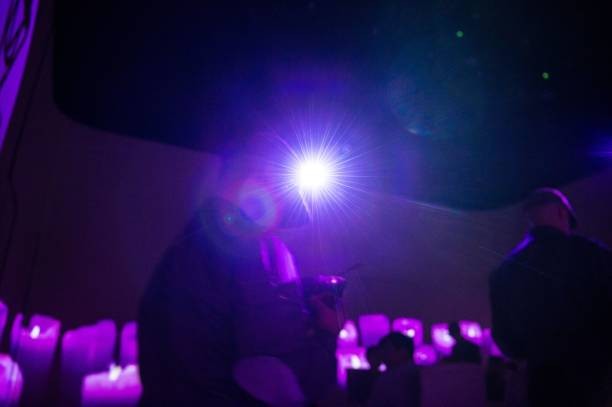The same bulbs used in workplaces and commercial locations, according to a recent study from U of T Scarborough, can destroy coronaviruses and HIV.
UV-LED lights, which can cycle between white light and disinfecting ultraviolet (UV) light, were used to eliminate both viruses.
They can also be retrofitted into many regular lighting fixtures, providing them a "unique appeal" for common spaces, according to Christina Guzzo, the study's principal author.
UV-LED lights to kill coronavirus

SARS-CoV-2 is an enclosed, nonsegmented positive-sense RNA virus that is responsible for the ongoing COVID-19 worldwide pandemic.
It is typically spread by respiratory secretions produced by talking, coughing, and sneezing.
Indirect methods of transmission, including as airborne and surface-mediated transfer, are also plausible, especially since SARS-CoV-2 may survive for up to 72 hours in aerosols and on surfaces.
Effective cleaning measures can help minimize virus transmission in elevated environments including hospitals, other health-care institutions, and public transport networks.
As per the present COVID-19 worldwide pandemic, proper disinfection technology for the severe acute respiratory syndrome coronavirus 2 (SARS-CoV-2) can help reduce viral spread either now or in the future, as per the study UV Inactivation of SARS-CoV-2 across the UVC Spectrum: KrCl* Excimer, Mercury-Vapor, and Light-Emitting-Diode (LED) Sources
UVC irradiation (200 to 280 nm) has been shown to be successful for viral cleaning.
However based on the safety criteria of testing, which are confined to biosafety level 3 (BSL3) facilities, there is minimal information available for SARS-CoV-2.
In commercial, public, transit, and health-care contexts, UV light is a useful instrument for preventing the transmission of respiratory infections and protecting public health.
The efficacy of different UV wavelengths in killing infections, especially SARS-CoV-2, must be determined in order to help attempts to manage the present COVID-19 worldwide pandemic and potential coronavirus-caused respiratory infections diseases.
SARS-CoV-2 may be efficiently inactivated utilizing a wide range of UVC wavelengths, with 222 nm providing the highest cleaning effectiveness.
Also Read: LED Light Literally Helps This Plant to Grow
Pros and cons of balanced UV's
Despite the fact that the lights left a tiny fraction of the virus alive, Guzzo refers to the "Swiss cheese model" of COVID defense.
Every anti-spread approach has flaws, but each layer provides another opportunity to intercept stray virus particles.
Exposure to UV light on a regular basis is essential for collecting those missing particles, and it's as simple as turning a switch.
A light bulb is also easier to replace than an air filtering system.
UV-LEDs are inexpensive and easy to install into existing light fixtures, according to Guzzo, and the bulbs are long-lasting and easy to maintain.
Automation helps with the lighting as well. Whereas the procedure of washing out surfaces with antibacterial agents provides potential for human mistake, light may be supplied in a regulated, anti-microbial quantity each time.
As hands are cleansed and wipes are discarded, the toxins and trash from these disinfectants find up in watersheds and landfills.
However, the lights aren't innocuous, and there is any need to wear sunblock and visors: UV radiation degrades nucleic acid, and continuous exposure is dangerous.
That's why Guzzo recommended turning on the lights when open locations are unoccupied, such as deserted buses that have completed their journeys or empty elevators that are traveling between floors.
By installing UV lamps in the subterranean portion of the track and cleaning it, escalator handrails might be cleaned on a constant basis.
Related article: LED Could Be Used to Purify Water in Remote Areas
© 2024 NatureWorldNews.com All rights reserved. Do not reproduce without permission.




![Climate Change is Reducing Dust Levels Worldwide as Arctic Temperature Warms [Study]](https://1471793142.rsc.cdn77.org/data/thumbs/full/70320/280/157/50/40/climate-change-is-reducing-dust-levels-worldwide-as-arctic-temperature-warms-study.jpg)
